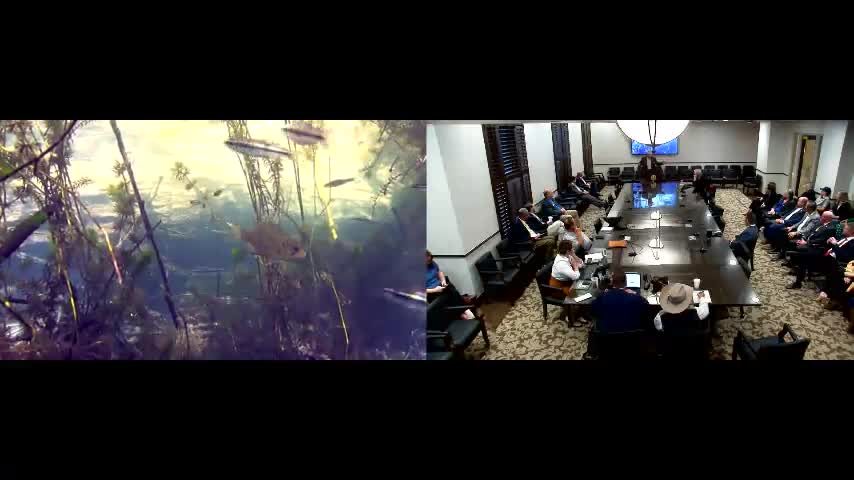Oklahoma's Streams Face Critical Decisions for Future Ecosystems
October 30, 2024 | Energy and Natural Resources, House of Representatives, Legislative, Oklahoma
This article was created by AI summarizing key points discussed. AI makes mistakes, so for full details and context, please refer to the video of the full meeting. Please report any errors so we can fix them. Report an error »

In a recent government meeting focused on the ecological health of Oklahoma's streams, officials emphasized the intricate relationship between water resources and local wildlife. The discussions highlighted the critical importance of maintaining healthy aquatic ecosystems, particularly as significant decisions regarding water usage are being made that will impact the environment for decades to come.
Speakers likened streams to \"spider webs,\" illustrating how disturbances in one area can have cascading effects throughout the ecosystem. They underscored the necessity of understanding not just the water needs of agriculture, industry, and municipalities, but also the intrinsic needs of fish and wildlife, which are often overlooked.
Oklahoma boasts an impressive biodiversity, with approximately 175 species of fish, including 100 species found in the Kiamichi River alone. This diversity is notable, as it surpasses the total number of fish species in many western states. However, the meeting revealed a concerning gap in public awareness; most anglers can only identify a fraction of these species, leading to a lack of understanding about their ecological significance.
The meeting also showcased specific species, such as the cardinal shiner and longear sunfish, which are vital to the health of local waterways. The longear sunfish, in particular, has been identified as three distinct species through extensive research, highlighting Oklahoma's unique contributions to biodiversity.
Participants stressed the importance of preserving the natural habitats that support these species, noting that the health of the streambed—characterized by clean gravel and minimal sediment—is crucial for spawning and feeding activities. The red spot chub was highlighted for its role in shaping stream environments through its spawning behaviors, further illustrating the interconnectedness of species and their habitats.
As Oklahoma navigates its water management strategies, the meeting served as a reminder of the delicate balance required to sustain both human needs and the rich biodiversity that defines the state's natural heritage.
Speakers likened streams to \"spider webs,\" illustrating how disturbances in one area can have cascading effects throughout the ecosystem. They underscored the necessity of understanding not just the water needs of agriculture, industry, and municipalities, but also the intrinsic needs of fish and wildlife, which are often overlooked.
Oklahoma boasts an impressive biodiversity, with approximately 175 species of fish, including 100 species found in the Kiamichi River alone. This diversity is notable, as it surpasses the total number of fish species in many western states. However, the meeting revealed a concerning gap in public awareness; most anglers can only identify a fraction of these species, leading to a lack of understanding about their ecological significance.
The meeting also showcased specific species, such as the cardinal shiner and longear sunfish, which are vital to the health of local waterways. The longear sunfish, in particular, has been identified as three distinct species through extensive research, highlighting Oklahoma's unique contributions to biodiversity.
Participants stressed the importance of preserving the natural habitats that support these species, noting that the health of the streambed—characterized by clean gravel and minimal sediment—is crucial for spawning and feeding activities. The red spot chub was highlighted for its role in shaping stream environments through its spawning behaviors, further illustrating the interconnectedness of species and their habitats.
As Oklahoma navigates its water management strategies, the meeting served as a reminder of the delicate balance required to sustain both human needs and the rich biodiversity that defines the state's natural heritage.
View full meeting
This article is based on a recent meeting—watch the full video and explore the complete transcript for deeper insights into the discussion.
View full meeting
